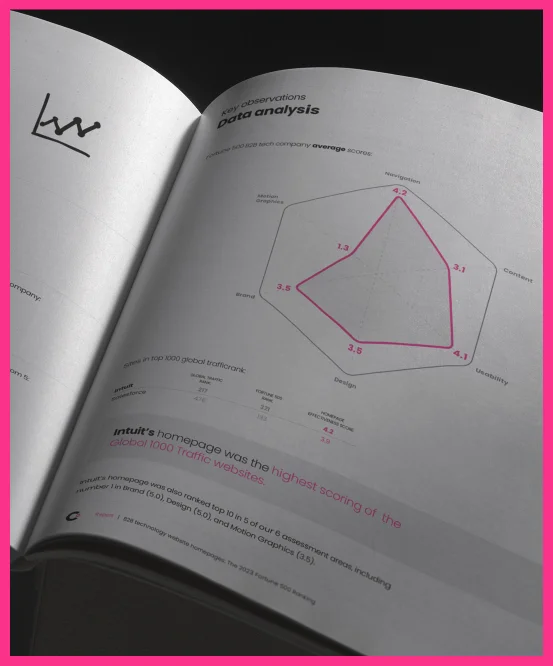For all the ways an ever-connected digital marketplace has enhanced our lives, it’s wreaked havoc on our attention spans. Between perpetually updating information across digital channels, multiple streaming media options, and the ever-present distractions of working from home, your customers face constant competition for their interest.
The health of your B2B sales process hinges on digital marketing efforts, and shrinking attention spans remain an ongoing challenge as you seek to nurture prospects with your website. User engagement is a key indicator of your web design’s success, especially as digital marketing has grown more critical and competitive. But how can you capture and retain the interest of your customer within the shortest window possible to deliver better results?
Standing out in a competitive field is a neverending challenge for your brand marketing, but as much as technology has expanded the problem it also delivers opportunities for a solution. As web browsing and design possibilities have grown more sophisticated, motion graphics, animation, and interactive elements are introducing new avenues for users to consume and engage with content.
While such eye-catching communication methods were once confined to video players, your options in modern information design can take your message – and your B2B audience – much further.
How B2B Motion Graphics Engage and Inform Website Users
One of the most informative KPIs at your disposal, the average time a visitor spends on your site is a strong indicator that your users are interested in what you have to offer.
However, in a digital environment, most users have a diminished appetite for chunks of text across multiple landing pages, and we see time on site drop without more visual aspects to improve the user experience. But the addition of motion provides an effective way to break patterns in how site visitors consume information – and, in the process, you can better hold their attention on your site.
While videos, animations, and interactive pieces are all forms of motion graphics, they all carry distinct differences. Video content remains an effective delivery method for standing features like product demos and webinars. But animation is no longer confined to a video player. As technology has evolved, animation plays a pivotal role in how content appears on the page.
HTML5 and SVG Allow More Flexibility with Code-Based Animation
Website animation was once subject to similar rules as video by demanding standalone players or specific formats such as Adobe Flash or animated GIFs. With the arrival of HTML5 roughly 10 years ago, developers could use CSS or JavaScript to mix flat page elements with animation, which breaks your motion graphics free from video players.
Animations in HTML5 are all code-based, which allows for more flexibility in how it is rendered on your website design. The advent of scalable vector graphics (SVGs) allows animations to be created and delivered in smaller file sizes. While a conventional video may be as large as 3 to 5 megabytes, modern motion graphics are often under a megabyte and fully responsive to the user’s platform.
Combine Different Types of Motion Graphics for a Dynamic User Experience
From standalone videos to the looping GIFs of social media memes, the variety of formats at your disposal to incorporate motion into a page design each carry specific strengths and weaknesses. But when combined effectively, your site can deploy multiple video formats for varying uses to dynamic effect.
On this landing page that outlines the differences between two website platforms, several types of motion graphics are at work. The elements used to create a seamless user experience are as follows:
- The video at the top begins before a user even starts to scroll. Since this video isn’t designed to deliver information, it has no sound. Instead, it draws the eye and encourages users to stay where they are, observe, and read the introductory paragraph.
- Colorful animations break up the page and provide greater visual interest than a static image. Created with SVGs and code rather than animated GIFs, the characters look sharp and will scale to differing screen sizes without any loss through compression.
- At the bottom, a motion graphic displays interactions and animations from a calculator tool on the next page. Too detailed to be delivered via GIF or SVG, the looping graphic is another smaller embedded video.
By exploiting various types of motion graphics, you can elevate a page of critical, but otherwise dry information into an engaging, dynamic experience.
Know Your Audience When Applying Motion Graphics to Your Pages
While the differing capabilities of these motion graphics formats allow for greater flexibility in their use, you have to keep your users in mind when applying their use. For example, if your target market is engineering-focused, you may want avoid overwhelming them with animations and video as they look for technical specs.
Plus, using SVGs and HTML5 requires a level of optimization that demands specialized skills. Given the format’s foundation requires a blend of artistic and analytical approaches, you’ll often find that coders aren’t gifted animators and animators aren’t strong coders. When leveraging video, some browsers will block background videos that automatically play, which requires specific coding to prevent. As the technology grows, the number of considerations expand as well.
However, as your website vies to capture and retain your audience’s attention, motion graphics offer creative ways to expand the reach of your marketing strategy. Your customer has always been a moving target your business must adjust to capture. Through effectively deploying these developments, your website will stay on the move as well.






